
How to Ensure Email Deliverability?
Email marketing starts with delivering emails to your subscriber’s inbox and continues with constantly optimizing your campaigns for conversion. Or so we’d like it to be. After countless hours perfecting the copy, debugging HTML/CSS, and painstakingly building organic email lists, it’s easy to lose an end-to-end perspective on the process.
It doesn’t stop there either. Your personas, main interest groups, and their characteristics play an important part too. All of these are essential to craft emails that ensure the best performance from your email campaigns.
With all the hard work that goes into campaigns, there’s nothing worse than finding that they never made it to their audience. Regardless of how carefully you plan your email marketing strategy, there’s a chance you might fail; and when you do, money isn’t the only thing you lose.
Landing safely into your subscriber’s inbox and being noticed should be the most important aspect of a successful email campaign. More than often, the terms email delivery and email deliverability are used interchangeably, though they’ve different implications.
It’s only wise to learn the differences before jumping into further discussion. To understand what might get in the way of you and your audience, it’s good to start from here.
Email Delivery vs. Email Deliverability
To better understand the whole explanation ask yourself these:
Email Delivery – Can a subscriber acknowledge or reply to your messages?
If your email doesn’t make it into an inbox, that implies the email failed to deliver, regardless of which inbox it would be shown in. So the answer to the question is NO if delivery fails.
Instead of an email, imagine, it’s a traveler trying to reach a conference. Deliverability would imply that they showed up at the correct air terminal. With a proper ticket and visa, they can confirm air terminal security to let them in. That’s delivery summed up
Similarly, when an email is effectively delivered, it implies that it reached the email address properly. Whether it’s the inbox or the spam folder, is not important.
Email Deliverability – Does it get to the inbox?
Deliverability is essentially where your email will land in the subscriber’s inbox. Could be anywhere from primary inbox to spam, or any other folder.
Let’s go back to our business traveler. After clearing airport security, the traveler has to reach their destination for the whole journey to make sense right?
Deliverability is the same here as the traveler’s flight reaching its destination. Even if most travelers get to their takeoff terminal (delivery), severe climate or other incidents may reroute them.
For instance, to another nearby airport. In which case deliverability becomes null, because they didn’t reach their destination. This is how email deliverability can be summarized.
Email Deliverability Depends on 3 Important Factors
1. Proof of identity
According to this, Standard email security protocols illustrate that you are who you say you are. This includes DomainKeys Identified Mail (DKIM), Sender Policy Framework (SPF), and Domain-Based Message Authentication, Reporting, and Conformance (DMARC). Each of these works like a visa, permit, or personal identifier.
2. Notoriety
Your sender notoriety is a score that signals how reliable your messages are. Every organization, including transactional email sending service providers, email clients, and Internet providers (ISP) may have various scores for you. However, your subscribers marking your messages as from a trusted source is also important to help increase these scores and, if not, reduce notoriety for your email id.
3. Content
Are your messages relevant to your audience? This is a crucial question to ask yourself. Joining a subpar copy with poor execution conveys a “not exactly” motivated email that is anything but compelling.
Abnormal design conventions can affect your email’s deliverability, depending on your past sending habits. An email with the headline “Bring in MONEY with a click” isn’t going to work. Tailoring your message to “what your audience cares about”— is the way to avoid issues.
5 Most Effective Ways to Improve Email Deliverability
Since we’ve distinguished email delivery and deliverability, here are some accepted solutions to guarantee email deliverability.
1. Maintain a Clean Email List
Even though authorization-based showcasing is fundamental, consent can be a major factor in improving email deliverability. An enormous number of inactive leads can drastically affect your deliverability since they offset your measurements. Consider eliminating inert subscribers based on essential metrics (i.e. click rates, open rates, etc.)
In case you’re having deliverability issues, your list may incorporate spam traps, which seem genuine but are not. Purchasing and leasing email lists or scraping email addresses from the web is simply deplorable.
Consistently eliminating invalid messages, verifying email addresses before sending emails, and keeping your inactive users engaged with opt-in check-ups are good ways to maintain a clean email list.
2. Give Simple Opt-out Choices
It’s obvious that unsubscription is a terrible sign. However, there’s no proof to connect unsubscription rates with deliverability. It can substantially improve your subscriber commitment and can also tidy up your email list.
Sending designated campaigns to individuals who need to accept your messages will probably expand into opens and clicks and unsubscriptions. If clients would like to unsubscribe, make it simple. It could be as straightforward as adding an unsubscribe link at the lower part of your emails, similar to this model:
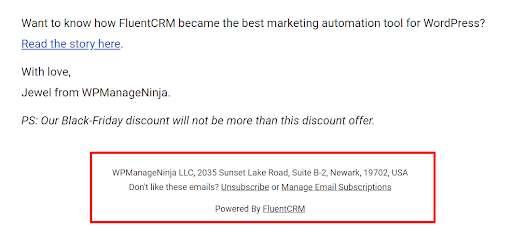
Try not to tuck away your unsubscribe button from plain sight. Make it an unmissable element in your email, whether in the footer or at the top. Smooth out the unsubscribing process so that it’s one simple action — else, you’re fighting a losing battle against the “report as spam” banner.
3. Keep Your Message Consistent and Concise
Your email subscribers are logical individuals and, if they voluntarily subscribed, they’re enthusiasts of your organization. So the email experience ought to be as charming as all the other ways you’ve impressed them if not more!
Chances are, you have a brilliant command of the language that causes your clients to feel associated with your image. To your intrigued readers, your email should thoroughly convey that vibe— it’ll show prospects that you care about obliging their necessities outside plain sales pitches and deals.
4. Verify Email Authenticity
Most email marketing systems ensure the emails being sent are consistent with web laws, like GDPR. If you compose emails in-house, double-check that you’re not in conflict with any of the laws.
A basic list of authenticity tests, including a footer banner with your company details and unsubscribe link. Along with that, you’ll need a custom email address specific to your domain.
5. Create Unique Emails
Before hitting send, always ask yourself, “Is this email relevant to my audience?”
That’s the most important answer you could need. Sending emails that resonate with your audience and capitalize on the one-to-one nature of the medium not only affects your deliverability but also helps improve subscriber commitment. Moreover, you’ll be able to build a steady relationship with your audience.
6. Maintain Message Consistency Across All Channels
To ensure email deliverability, it’s essential to maintain consistent messaging across all channels, including LinkedIn. When your messaging aligns across both email and LinkedIn, it builds trust with your audience and reduces the chances of being marked as spam.
Tools like Lemlist or its alternatives can help automate and personalize outreach via LinkedIn, ensuring a cohesive message. Consistent communication across platforms boosts credibility and ultimately aids in better email deliverability and lower unsubscription rates.
Wrapping Up
With these tips, we believe you’ll be prepared to get moving on further developing the email experience for yourself as well as your audience.
Knowing the distinction between delivery and deliverability may be the missing connection to reforming how you’re moving toward email marketing. What’s more, these small measures will ensure all that hard work crafting emails actually reaches where you need them to be.
Rasel Siddiqe
Table of Content
Subscribe To Get
WordPress Guides, Tips, and Tutorials






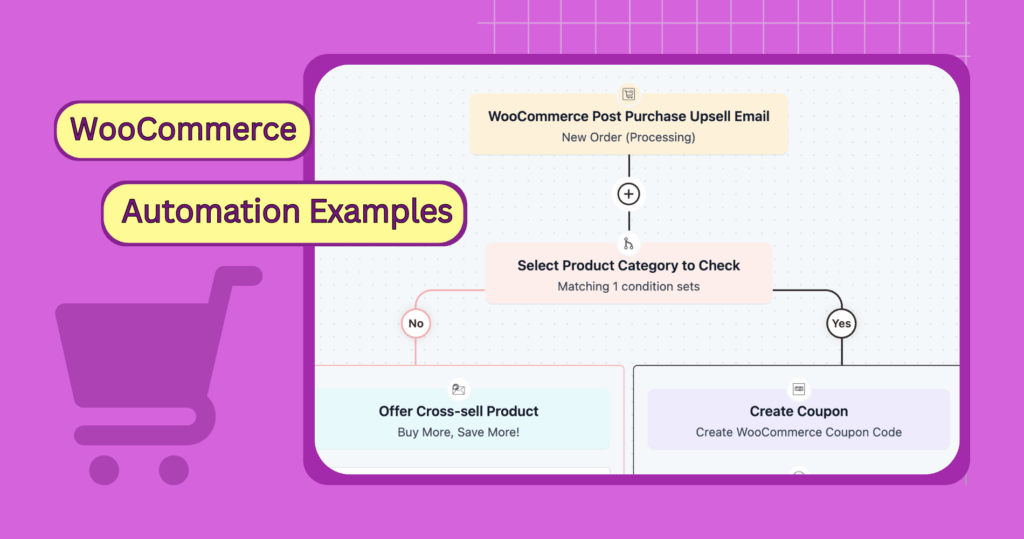

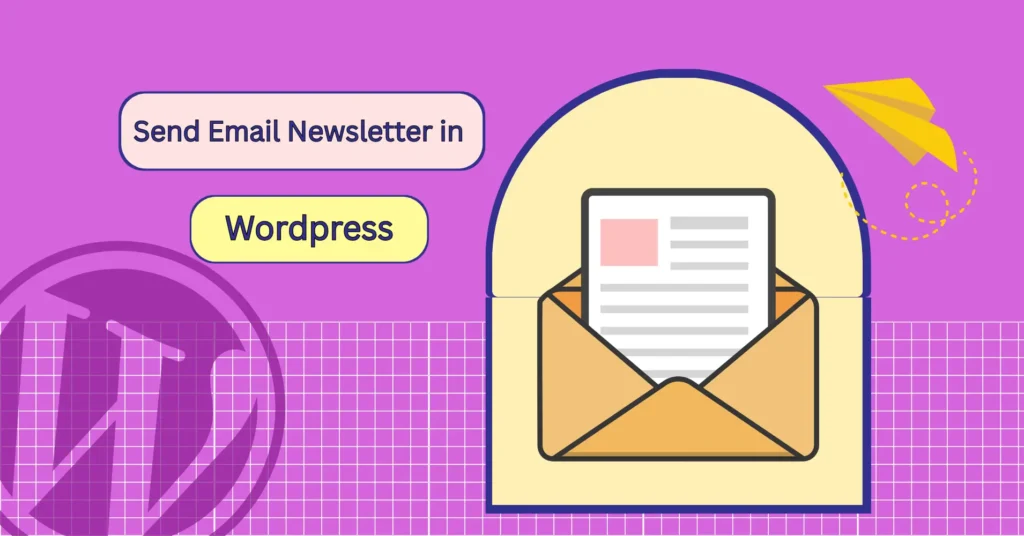
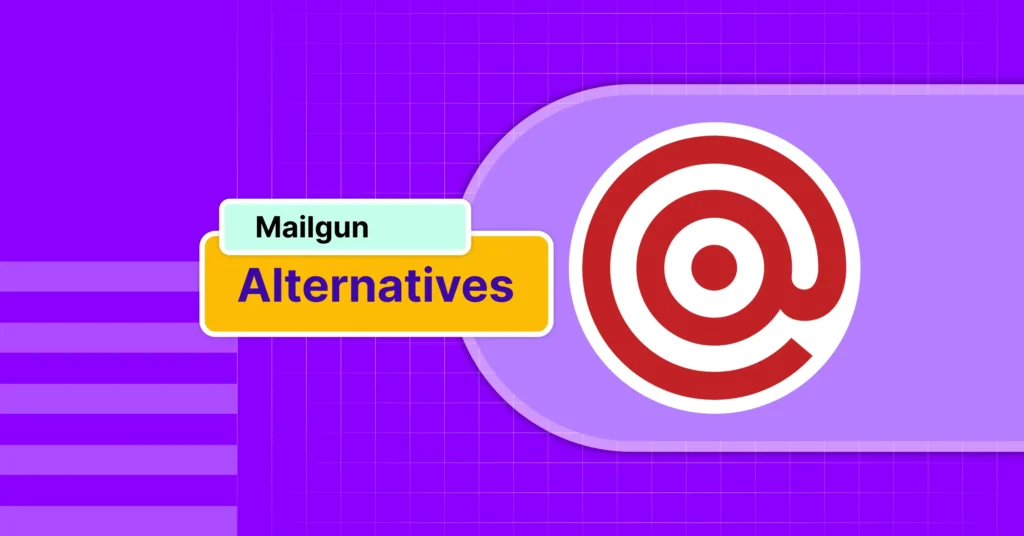
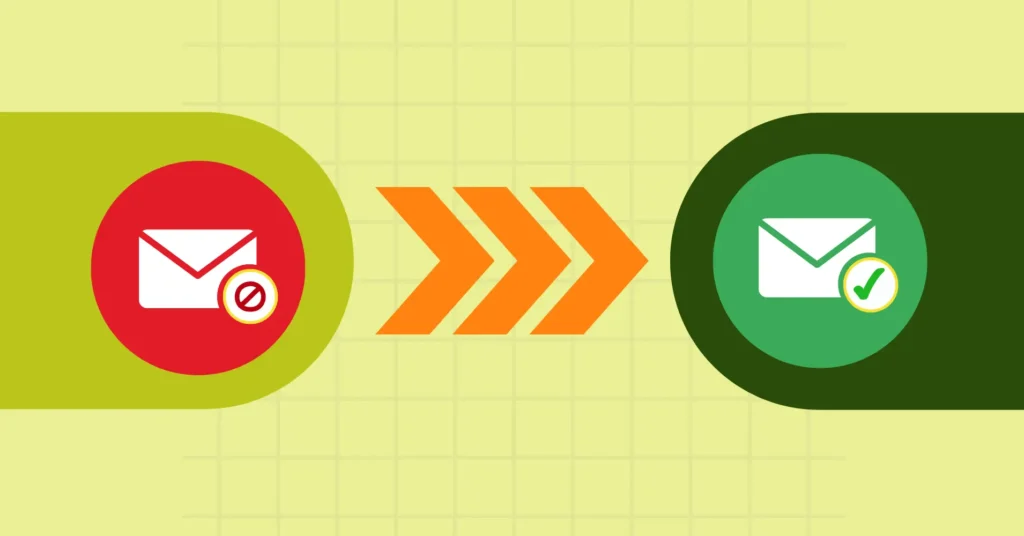

Leave a Reply